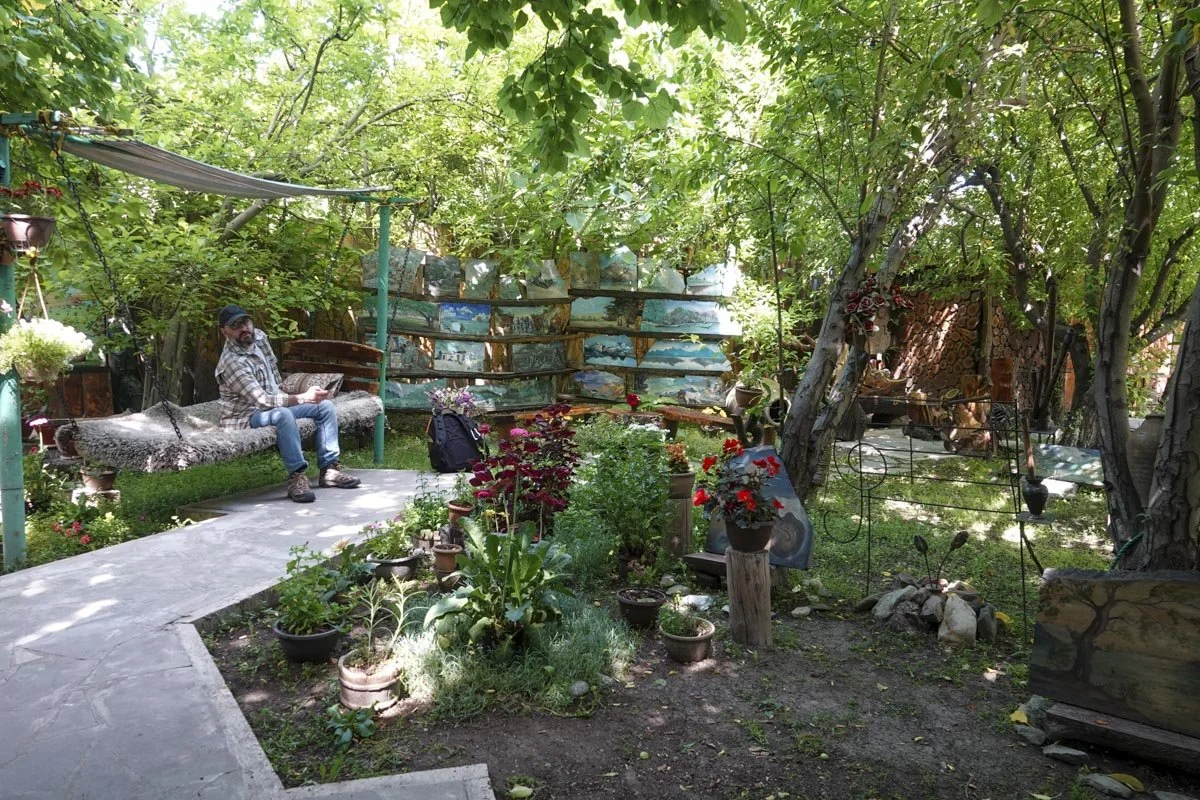Genocide Monument and Music
I will cover two stops along our tour in this post. First is the Genocide Memorial and Museum. This commemorates the massacre of Armenians in the Ottoman Empire from 1915 to 1922. This brought the Ottomans into World War I, on the side of Germany. The complex is on Tsitsernakaberd Hill, across the Hrazdan Gorge from central Yerevan. The Ottoman Turks had undergone a leadership change and the new leaders wanted to purify and protect their empire by getting rid of the Armenians. Mind you, this area used to be Armenia and the Armenians wanted to be a part of it.
Armenians charge that the Ottomans undertook a deliberate campaign to deport or massacre all the Armenians from the Ottoman territory. Armenia considers it an act of genocide. The Turkish government resists this charge and contends that, although atrocities took place, there was no official policy of extermination against the Armenian people.
Whatever the accurate explanation, some 1.5 million Armenians were killed by the Turks during this period of time. As of today, Armenia, at a minimum, wants an admission of guilt from Turkey. The Turks refuse to admit there was a genocide, despite all the deaths and records of them.
Construction of the monument took place in 1966 and 1967, during Soviet times. One hundred thousand Armenians demonstrated in 1965 in Yerevan to commemorate the 50th anniversary of the genocide. They demanded that the Soviet authorities officially recognize it as a genocide.
The 145-foot monument symbolizes the national rebirth of Armenians. A 328-foot wall (on the left) lists the names and towns and villages where massacres and deportations took place. The memorial has 12 slabs in a circle, representing the 12 lost provinces in present-day Turkey. In the middle is an eternal flame for the 1.5 million people killed.
Adjacent to the memorial is the Genocide Museum and Institute which opened in 1995. The museum contains photographs, documents, reports, and films that document the genocide. It was extensive and difficult to see and read about.
Our next stop was unusual and very uplifting compared to the genocide museum. We stopped in an old section of Yerevan. We walked into a person's home, by way of some narrow alleys. When it seemed like we might be entering a peculiar place, we came into the person's backyard. The family has lived here in Yerevan for many generations and our guide said this home was typical of an old Yerevan family.
This stop was to meet a local musician who is also makes musical instruments. He showed us some uniquely Armenian woodwind instruments, such as the duduk, zurna, and shvi. They just looked like flutes to me. They are all made from Armenian-grown apricot wood.
Our host explained the instruments to us, and he also played several of them. These instruments are evidently important to Armenian's cultural identity and play a key role in Armenia's national folk music. You can see some of his instruments to the right of him.
The piano had an unusual story to it. This man purchased it to be part of his whimsical backyard. He planned to make it into a waterfall. But before he converted the piano, he found out that it has been a gift to the Belgian Royal Family. It was a long story, but he decided to refurbish it and keep it as a piano. He played us some music on the piano, then his wife joined him for a duet. They were quite good musicians.







